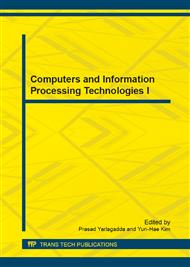p.1064
p.1068
p.1079
p.1083
p.1087
p.1091
p.1097
p.1105
p.1110
Torque Converter Turboshaft Fracture Failure Analysis and Improvement
Abstract:
Torque converter turboshaft is a hydraulic mechanical transmission devices of key components. In a new-mounted hydraulic mechanical transmission, super heavy laden vehicle during the test, the torque converter turboshaft fracture occurs when the vehicle traveling to 13 00 km, resulting in transmission power interruption, chassis parking problems. To achieve accurate positioning of the torque converter turboshaft fracture failure reasons, this paper analyzes the means of optical microscope and scanning electron microscopy, carried out on the fracture failure analysis, then using classical and finite element method to calculate the turboshaft intensity of the strength, and proposed optimization improvement program based on the cause of failure.
Info:
Periodical:
Pages:
1087-1090
Citation:
Online since:
June 2014
Authors:
Keywords:
Price:
Сopyright:
© 2014 Trans Tech Publications Ltd. All Rights Reserved
Share:
Citation:


